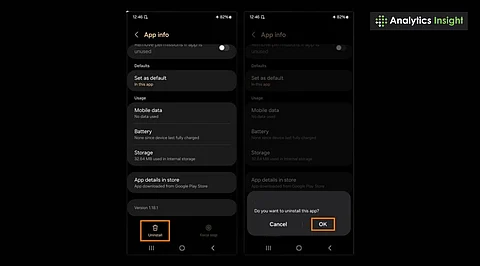

Spyware can significantly harm Android performance by draining the battery, slowing down the speed, and stealing sensitive data, such as passwords and messages.
Detecting spyware early involves checking app permissions, monitoring unusual behavior, and utilizing trusted antivirus tools for comprehensive scans.
Prevention is the best defense. Stay safe by avoiding shady downloads, regularly updating your software, and securing your phone with a passcode.
Smartphones store a significant amount of personal data, making spyware a genuine threat to user privacy. Spyware is software that secretly monitors a phone. It tracks activities silently without the user’s awareness.
Some of them can even record keystrokes or listen in on conversations. Such programs typically run in the background, hidden from normal view. hese might come from fake apps, unsafe websites, or even someone with direct access to your phone.
Android users are at greater risk due to the open-source nature of the Android operating system. This guide outlines the process to remove spyware on Android.
Some behaviours could suggest a spyware infection. While none of these behavioural signs constitutes real proof, one or more of these are strong warning indicators:
Battery drainage occurs faster than normal.
The phone gets hot even when idle.
Unusual spikes in data usage.
Random pop-ups or ads.
Apps you didn't install pop up on your screen.
Slower performance.
According to a 2023 report by Kaspersky, over 35% of Android users faced at least one spyware-related threat in the past year.
Also Read: From Spyware to Support: How Companies are Reinventing Remote Monitoring for the Better
To detect spyware, users can employ several methods. This will help them remove spyware on Android.
Go to Settings > Apps > Permissions. Look for apps with access to messages, calls, or the microphone. It typically requires access to more data and permissions than necessary.
Restarting the phone in safe mode turns off third-party apps. If the phone works better in this mode, it may be infected with harmful malware.
Apps like Avast, Norton, or Bitdefender can scan for spyware. They often find hidden files that regular users can’t see.
Go to Settings > Apps > All Apps. Look for unfamiliar or suspicious names. Some spyware apps disguise themselves as system tools.
Once detected, removing spyware is essential. This will help the user increase their Android phone security. Here’s how to do it:
If an unknown app is spotted, uninstall it immediately. Go to Settings > Apps > Select App > Uninstall.
Apps like Malwarebytes or Kaspersky Mobile Security are designed to detect and target spyware. Perform a complete scan and follow the provided steps to eliminate any detected threats.
Clearing the cache can help remove leftover files. Go to Settings > Storage > Cached Data and clear it.
If nothing else works, do a factory reset. Backup data first. From Settings, go to System > Reset, and initiate a Factory Data Reset. This wipes everything, including hidden spyware.
New software updates often fix security flaws. Go to Settings > System > Updates and check regularly.
Also Read: Security Alert: New WhatsApp Spyware Threat Targets Users Worldwide
After following the steps to remove malware from your phone, staying protected is a great option. Prevention is the best defense. Here are ways to stay safe:
Download apps only from the Google Play Store.
Avoid clicking on unknown links or attachments.
Utilize strong screen locks and biometric security features.
Update all apps and software regularly.
Don’t leave your phone unlocked or unattended.
A 2024 report from Norton showed that phones with security apps were 55% less likely to be infected.
The basic thing to remember is that users need to increase their phone privacy. Spyware often goes unnoticed but causes real harm. With basic tools and regular attention, anyone can keep their phone safe.
Staying aware is the first step. Combine awareness with action - scan regularly, uninstall suspicious apps, and avoid shady links. Protecting privacy on Android starts with small, smart moves.
